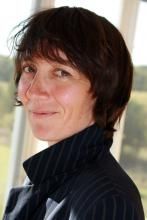Welcome to the second interview in a series with female leaders, teachers and practitioners in the holistic therapeutic fields. These are women whose teaching has inspired me and I have been keen to learn more about their personal philosophy, experiences and the influences on their professional practice. I hope you enjoy hearing their story too! Let us know your thoughts, Nicole. For further articles by leading female practitioners visit:
https://naturalhealingartsblog.weebly.com
Profile: Alice Whieldon, MA PhD SFHEA MRSS(T)
Alice has spent her life researching the keys to what helps in finding fulfilment and acting less from old traumas and patterns. In 1985 she came across Shiatsu and it was this work, along with the Enlightenment Intensives, that struck particularly strong chords for her. She has remained a student of both disciplines ever since.
In 1997, she also met Kishi Akinobu, internationally renowned Shiatsu master, however, in 1980, Kishi began to develop his work in a new direction called Seiki which is within the Shiatsu tradition and a development of that work. When Alice met Kishi she recognised the key she was looking for. When in 2008 Alice suggested they write a book together, Kishi was keen on the idea and Sei-ki: Life in Resonance, The Secret Art of Shiatsu was published in 2011. Kishi died in 2012 but Alice continues to work with Seiki.
She has also spent time training in and practicing Mind Clearing. Mind Clearing is based, like Seiki, on the principle that there is an essential person that is not the mind and not the body. In 2016 her book, Mind Clearing: the key to mindfulness mastery was published by Singing Dragon, London and Philadelphia.
Why did you choose to learn Shiatsu and Seiki, what brought you to the practice?
I was cooking at my father’s conference centre in 1985 when Cliff bought Pauline and Kiku there to teach a workshop. I was given a shiatsu treatment and recall never having felt so ‘touched’ before. It brought up a whole wave of emotion that, at 18, I hadn’t really known was there. And this with apparently so little. Pauline or Kiku, I forget which, told me that I had a very good hara. I had no idea what that meant but it stuck in my mind and the whole experience resulted in my determining to learn Shiatsu. It was in 1990 that I actually started my training and completed it with the Shiatsu College in 1994. But I never reconnected with that initial feeling of being touched until I met Kishi in 1997. As soon as he knelt down beside me I felt I had come home. In his touch and his presence, I recognised both that touch beyond the body as well as the openness and seeing of the mediation I had done. From that point on I worked with Kishi, until his death in 2012.
What does Seiki mean to you now, what purpose does it serve you as an individual?
It is my personal practice or discipline. Every time I work with someone it is new; an opportunity to invite understanding for myself and my client and recognise the real. It is my point of connection with others, the stone against which I form myself and the beauty of recognising others.
What is your philosophical approach to your practice – as a teacher and as a therapist? (i.e. what do you see the purpose of your healing practice in the life of the individual – why do it?)
For myself it is the above. For others I seek to recognise them and this is a moment of utter quiet and balm for both of us.
Who or what, has been the biggest influence on your path as a practitioner and why?
Kishi recognised what others are. It was a great relief to me to meet him as he understood what I understood about life. It is a great sadness that he is no longer around but he has left a powerful impression.
What significant lesson/s did one of your teachers teach you?
That surrender is the more important ‘discipline’ than discipline; that we can’t cure, only the client can do this; that shyness can be a form of arrogance; that setting aside ego, time and time again, is the only way.
With the insight you have now, what, if anything, do you wish you had known at the beginning of your journey?
Everything is in fact as it should be. But there is one thing – I wish I’d risked speaking more about my experience and not fearing so much what others might think of me.
What benefits or hindrances, if any, have you encountered as a female practitioner or noticed when teaching women?
Although there are lots of female teachers in Shiatsu, it remains male dominated. Women don’t generally get the support from partners and students that men automatically receive so it can be much harder to forge ahead as a teacher. It is harder to be recognised, unless perhaps one is working in the field of women’s health. Female students don’t put themselves forward as much as male students either.
What advice might you give to student practitioners training now?
Get the certificates if this smooths your path in life, but Seiki and Shiatsu are inner paths, so be prepared to be a student forever. Practice as you would a martial art, like Aikido. Find a teacher you want to learn from and steal everything you can from them mercilessly and without ego.
What is the next step or stage for you? What are you working on developing?
I’m seeing if it is possible and desirable to put together a Seiki training on a martial arts model which is layered rather than linear. I am also building a training and practice around Mind Clearing.
Any other reflections?
It’s a difficult path for me, but at least – and this is very important – it is interesting.
